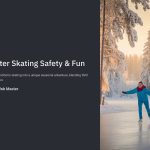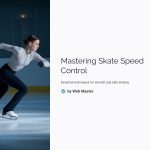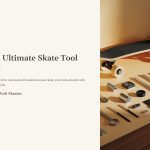 Controlling speed while skating is a crucial skill that enhances both safety and performance. Whether you’re a beginner or an experienced skater, understanding how to manage your speed effectively can prevent accidents and improve maneuverability. In this guide, we’ll cover key techniques to regulate your skating speed with precision.
Controlling speed while skating is a crucial skill that enhances both safety and performance. Whether you’re a beginner or an experienced skater, understanding how to manage your speed effectively can prevent accidents and improve maneuverability. In this guide, we’ll cover key techniques to regulate your skating speed with precision.

Why Speed Control is Crucial in Skating
Speed control is not just about slowing down—it’s about maintaining balance, adjusting to different surfaces, and reacting quickly to obstacles. Without proper speed regulation, skaters may struggle with sudden stops or turns, leading to potential falls or collisions. Mastering this skill allows for smoother movements and greater confidence on the ice or pavement.
Benefits of Proper Speed Control:
- Enhanced Safety: Prevents falls and collisions by ensuring better reaction times.
- Improved Performance: Allows for smoother transitions and better maneuverability.
- Energy Efficiency: Helps conserve energy by avoiding unnecessary speed bursts.
- Surface Adaptation: Adjusting speed is essential when transitioning between rough and smooth terrains.


The Basics of Speed Adjustment
Skaters must learn to control their momentum using both their body weight and skating techniques. Here are some fundamental methods:
1. Adjusting Body Position
- Lowering your center of gravity helps maintain stability while slowing down.
- Bending your knees slightly increases control and reduces sudden jerks.
2. Using Edge Control
- Leaning into your inside or outside edges can naturally adjust speed.
- The deeper the edge angle, the more friction is created, slowing you down.
3. Controlling Stride Length
- Shorter strides reduce speed, while longer strides generate more momentum.
- Adjusting stride length strategically allows for smoother deceleration.

Effective Braking Techniques
Knowing how to slow down properly is essential for safe skating. Here are some common braking techniques:
1. T-Stop
- Place one foot behind the other in a “T” position and apply pressure.
- The dragging skate provides friction, gradually slowing you down.
2. Plow Stop
- Widen your stance and push your heels outward while keeping toes pointed inward.
- This technique increases resistance and helps with a controlled stop.
3. Hockey Stop (Advanced)
- Quickly turn both skates sideways, using the edges to create friction.
- This method is ideal for experienced skaters who need to stop suddenly.

Utilizing Terrain to Regulate Speed
Different surfaces affect skating speed, and understanding how to adapt is crucial:
- Rough Surfaces: Naturally slow you down due to increased friction.
- Downhill Slopes: Require more braking control to prevent excessive speed.
- Smooth Ice/Rinks: Offer less resistance, requiring precise speed management.
Adapting Techniques:
- On rough terrain, lift your skates slightly to minimize drag.
- When going downhill, use controlled braking methods like the T-Stop.
- On smooth ice, maintain a relaxed stance and avoid excessive leaning.

Common Mistakes in Speed Control
Avoiding these common errors can significantly improve your speed control skills:
- Leaning Too Far Back: Can cause loss of balance and instability.
- Overuse of Braking: Abrupt stops can lead to unnecessary strain on joints.
- Neglecting Edge Control: Improper weight distribution reduces effectiveness.
- Ignoring Terrain Changes: Not adjusting for surface types can lead to accidents.

Advanced Speed Control Strategies
For more experienced skaters, advanced techniques can provide greater control:
- Crossover Speed Control: Using crossovers to decelerate without stopping.
- One-Foot Gliding: Helps in balancing speed with minimal effort.
- Quick Edge Switching: Rapid edge transitions to adjust momentum smoothly.
Final Tips:
- Always practice on safe terrain before trying new techniques.
- Focus on gradual improvements rather than abrupt changes.
- Stay aware of surroundings to anticipate necessary speed adjustments.
*Capturing unauthorized images is prohibited*






